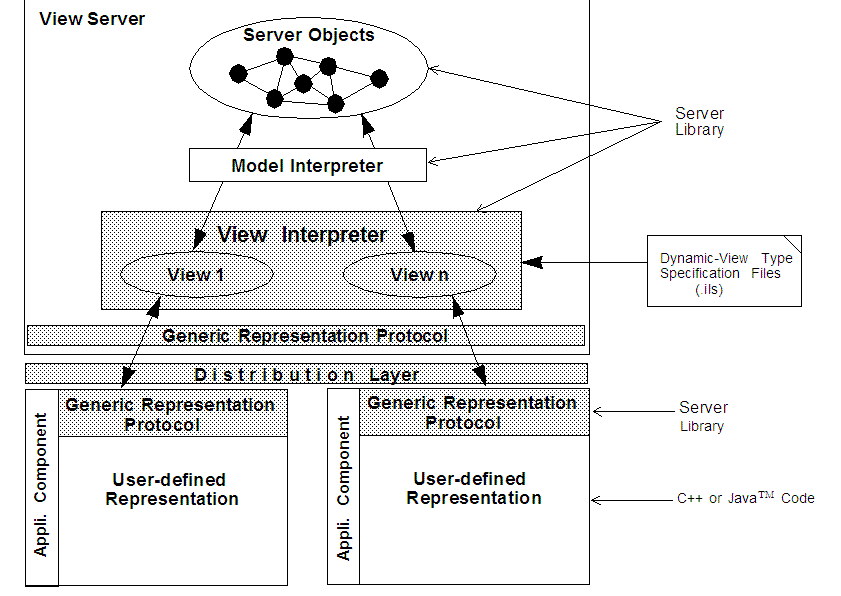Standard Mechanism
Dynamic view services are higher-level
interface services that let you define view types on a Server
object model at runtime. These interface services cover both the server side and the component side, making the distribution layer between a view server and its components transparent. On the component side, the dynamic view services feature a
generic representation protocol that lets you map your specific representation types to generic representation types. This generic representation protocol is implemented in both C++ and Java languages. Thus, you can develop an application where a C++ object server is interfaced with some components implemented in C++ and some others in Java (see
Figure 1.1).
Mapping between server classes and representation types is specified in dynamic-view type specification files (
.ils files). These files are loaded by a
view server at server start-up or at any time during the execution of the server. They can also be modified and reloaded during execution.
Dynamic view types are processed within the server by a
view interpreter, which is completely transparent to the user. This view interpreter interfaces a
server model interpreter which gives access to the description of server classes, data members, relations and functions at runtime. A set of specific macros, compiled together with server object model classes, is used to declare the object model to the server model interpreter.
Dynamic view services can be used in any application, either linked or distributed. They include a generic communication protocol which transparently distributes components through a network. It also supports communication between C++ server and Java components.
Dynamic view services are illustrated by the grey areas in the following figure.
Figure 1.1 Rogue Wave Server Dynamic View Services
Version 5.8
Copyright © 2014, Rogue Wave Software, Inc. All Rights Reserved.

